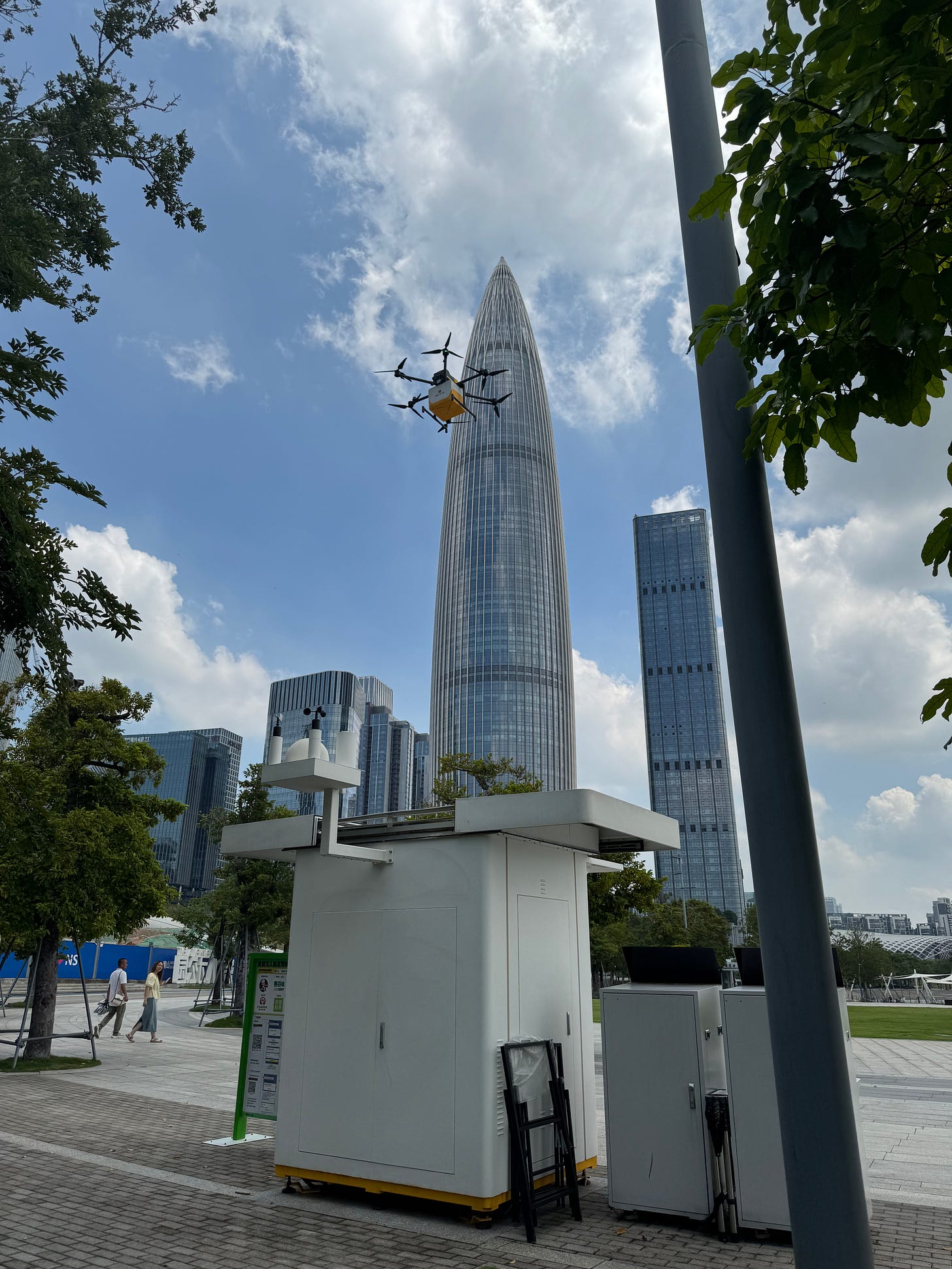The Low Elevation Economy
Drones Drone
A pilot test of non-piloted technology.
Shenzhen is notable for its drones. There are a number of tests of drone deliveries of food from nearby restaurants to a fixed point at Shenzhen Talent Park, illustrated in the video below.
Interestingly, dragonflies are attracted to the drone drop-off, and there was a swarm there.1
My cohort ordered me delivery of a Subway Sandwich and Pepsi via drone. It took about 20 minutes from order to delivery, but all was in good order.
Is this the future? In terms of getting things delivered, there will be a competition between drones and small robots, and humanoid robots. Drones will (a) be noisy until some noise cancellation tech is employed, and (b) require a certain spatial configuration to work. Perhaps there will be landing pads on everyone’s balcony. Alternatively they may be delivered to the rooftop, but require the recipient to be there. Small robots may have similar issues, but deliver to the front door. I see them more likely to get robbed or crushed, and being especially difficult in congested environments like cities. Humanoid robots, if they scale economically can be an alternative, since they can operate in an environment already designed for people.
We may also have hybrids, vehicles dispatched from a distribution hub to a local precinct, and drones being dispatched from that vehicle to solve the last meter problem (hyper logistics). This seems a lot for a Subway Sandwich, and I am not expecting it to go over well in suburbia, where the neighbours will complain, but automating the supply chain down to the last drop is the direction things are going.
Drones delivering snacks in Shenzhen Talent Park.
In response to my query as to why Dragonflies are attached to drones, it seems there are multiple hypotheses. ChatGPT O3 tells me:
Dragonflies pick breeding water by homing in on horizontally polarised reflections. Many plastics, carbon-fibre arms, and even gloss paint on small multirotors reflect light the same way water does. The drone can therefore look, to a dragonfly, like a mobile patch of pond. ScienceDirectThe Dragonfly Woman
Because a drone’s propellers churn the air, tiny midges and gnats get lifted off leaves and grass. Dragonflies notice the sudden swarm of prey around the aircraft and move in to feed, just as they follow lawn-mowers or walking animals for the same reason. blog.entomologist.netThe Dragonfly Woman
The motors emit a steady hum in the 100–400 Hz range—overlapping the wing-beat frequencies of many small insects. Some insects key on these sounds; evidence for dragonflies is thin, but the overlap can add to the lure. blog.entomologist.net
Many dragonfly males defend airspace a few metres wide. A whirring object of similar size that hovers at head height can be treated as a rival and gets inspected or chased.
Keep reading with a 7-day free trial
Subscribe to Transportist to keep reading this post and get 7 days of free access to the full post archives.





